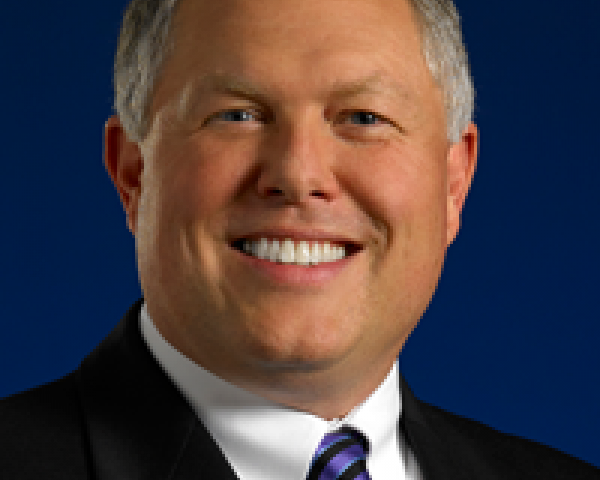By now, most of you have read the series of articles published by ProPublica on “The Demolition of the Workers’ Comp.” These well-written articles touched on some very important issues faced by our industry. For example, caps to the wage-replacement benefits provided under workers’ compensation can devastate employees earning higher wages. In addition, there is wide variation in the total-loss-of-use benefits provided under the various state systems. Legislators around the nation and people in the workers’ compensation industry would do well to carefully consider some of the issues raised by ProPublica.
As someone who has been in the workers’ compensation industry for more than 25 years, I also found there were several shortcomings in the ProPublica stories. For example, ProPublica failed to touch on what is often the biggest reason behind an injured workers’ poor recovery, and that is the secondary-gain motivation of unscrupulous medical providers and attorneys. I remember years ago, when I first started handling claims, Texas had the worst workers’ compensation system in the nation. Plaintiff attorneys would refer injured workers to physicians who had been sued so many times that they had lost privileges at every hospital in the state. But that didn’t discourage these physicians, who had set up operating rooms in their offices and continued ruining the lives of so many injured workers. Many of the injured workers who were treated by these physicians were left in ruin both physically and financially. But this harm to injured workers was not being done by insurance companies or employers or the state systems. This harm to injured workers was being done by the attorneys those injured workers trusted and the doctors who worked with those attorneys. These attorneys and doctors were not motivated by what was best for the injured worker. They simply wanted a payday.
Today, Texas has one of the best workers’ compensation systems in the nation. What changed? The legislators and regulators realized that they had to stop those who put their self-interests ahead of injured workers. Legislators instituted treatment guidelines, mandatory second opinions, attorney fee caps and approved physician panels. Over time, those doctors who put their financial interests ahead of the health of injured workers were removed from the system. Texas is a remarkable success story that illustrates how the workers’ compensation system can be improved to provide better outcomes for both injured workers and employers.
ProPublica also noted that insurance premium rates are at a 25-year low. While this may be true, it is an extremely misleading statistic. Over time, there have been significant advances in loss prevention and safety. Workplaces are safer than they were 25 years ago. Lower "rates" reflect both safer workplaces and more competition among carriers. However, lower “rates” do NOT mean employers are paying lower premiums than they were 25 years ago. I would challenge you to find any employer that is paying lower premiums than 25 years ago. For most employers, premiums have increased steadily over time, and they continue to increase. Rate is but a single element in the calculation of premiums, so looking at rate alone as a performance measurement does not provide an accurate reflection of the true picture. Also, based on National Council on Compensation Insurance (NCCI) data, claims costs have risen pretty steadily over the last 20 years, as well. So, premiums and claim costs are significantly higher than 25 years ago. Those data elements are a better reflection on the actual state of the workers’ compensation industry than rate.
Many choose to use the ProPublica articles as an indictment on the entire workers’ compensation system. While I agree the system is far from perfect, the system functions quite well most of the time. The vast majority of injured workers receive medical treatment and return to work in their pre-injury job without any conflict or complications. Those workers do not retain attorneys, suffer financial hardship or have significant lasting physical effects from their work injury. For these workers, the system does exactly what it is intended to do.
There will always be examples of injured workers for whom the workers’ compensation system produced an undesired result. It is impossible to design a perfect system. However, for every example that can be provided where the system didn’t work, I can provide you examples where it worked very well. In the workers’ compensation industry, we are in the business of helping people recover from injury and resume their place as a productive member of our society. For the most part, this is something the industry does very well.
My company deals with catastrophic injuries and other high-dollar claims. Our caseloads are literally the “worst of the worst” in the workers’ compensation industry. We see horrible, life-changing, devastating injuries every day. Yet, in spite of this, I can provide countless examples of how the efforts of our staff, the employers we insure and the claims adjusters and service providers we work with went above and beyond what was required under the workers’ compensation statutes. For example:
- A paraplegic worker lived with his family in a dilapidated mobile home that was insufficient for his wheelchair. We were obligated to provide him with comparable housing, which would have been a new mobile home. Instead, we purchased a house that was large enough for him and his family, complete with all the necessary modifications needed to make the home handicap-accessible.
- A paraplegic worker used to enjoy hunting with his family. We purchased an all-terrain wheelchair in addition to his regular wheelchair so he could continue to enjoy this activity with his family.
- We recently purchased experimental motorized leg braces for a paraplegic worker. Because of these braces, he is able to walk again.
- I have seen numerous injured workers whom we have assisted in recovering from an addiction to opioid pain medications. When these injured workers are free of this addiction, their quality of life and their relationship with their families is significantly improved. We have had both injured workers and their family members thank us for helping them overcome this addiction.
I’m sure every workers’ compensation carrier or third-party administrator has similar examples they could share. My point is, for everything wrong that people can identify about the workers’ compensation system, there are also a lot of good things about it. There are also many good people in this industry who work very hard to assist injured workers in their recovery. At the end of the day, claims adjusting is about helping people. Perhaps we, as an industry, need to do a better job sharing the positive stories of what we do every day to make the lives of injured workers better.








